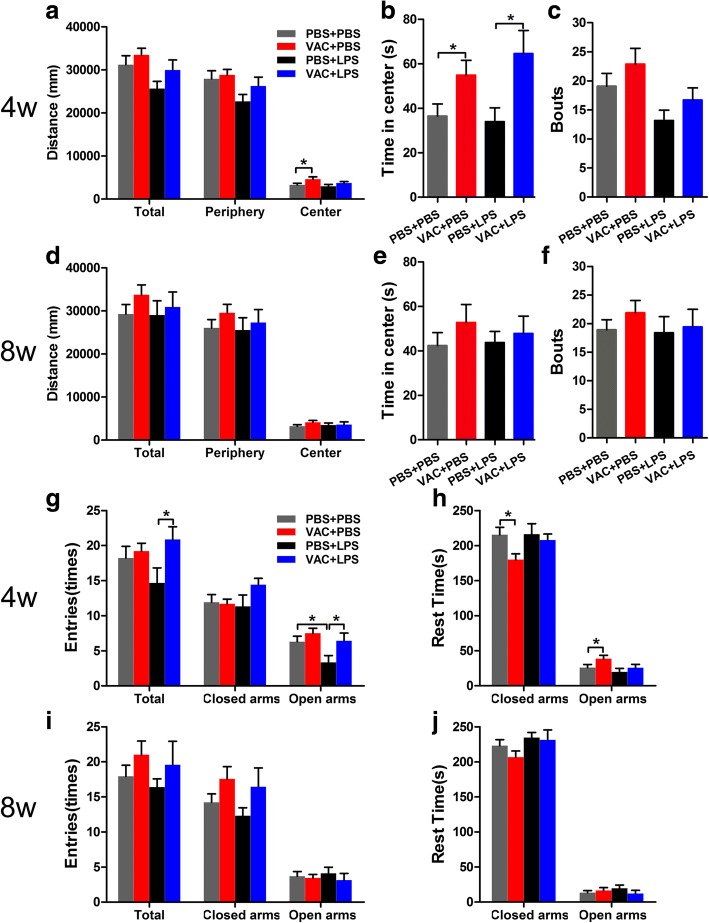Fig. 3.
Effects of maternal VAC and MIA on anxiety-related behaviors at 4 and 8 w postnatally. a–c In the OFT at 4 w, a two-way ANOVA for distance traveled in the center revealed a significant effect of VAC (F1,32 = 4.777, p = 0.036). Similarly, for time in the center, there was a significant effect of VAC (F1,32 = 10.988, p = 0.002). Subsequent analyses verified that VAC pretreatment increased the distance that mice walked in the center area compared with the control treatment (p = 0.026) and increased the time spent in the center (p = 0.014). However, there was no significant effect of MIA in the OFT. g In the EPM at 4 w, a two-way ANOVA of entries into open arms revealed main effects of MIA (F1,32 = 4.932, p = 0.036) and of VAC (F1,32 = 5.539, p = 0.036). The numbers of entries into the open arms were lower in MIA mice than in controls (p = 0.028) but were increased by VAC pretreatment (p = 0.041). h In the EPM, rest time in the open arms at 4 w was increased by VAC compared to the control treatment (p = 0.047). By contrast, there were no significant changes in the open field (d–f) or the elevated plus maze (i and j) at 8 w. n = 8–13 mice/group; *p < 0.05 (two-way ANOVA and Bonferroni post hoc test). The results are all shown as the mean + s.e.m.

